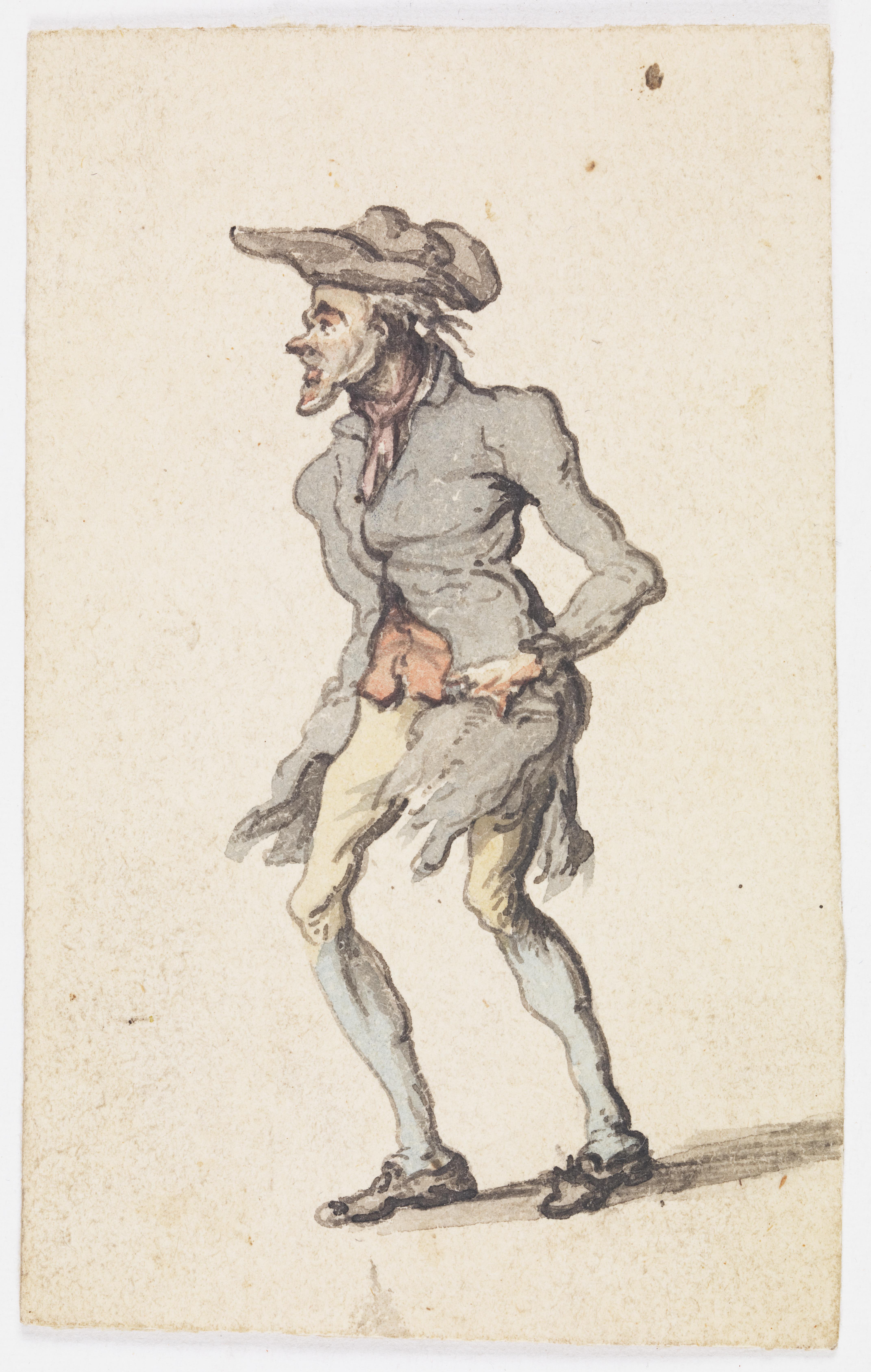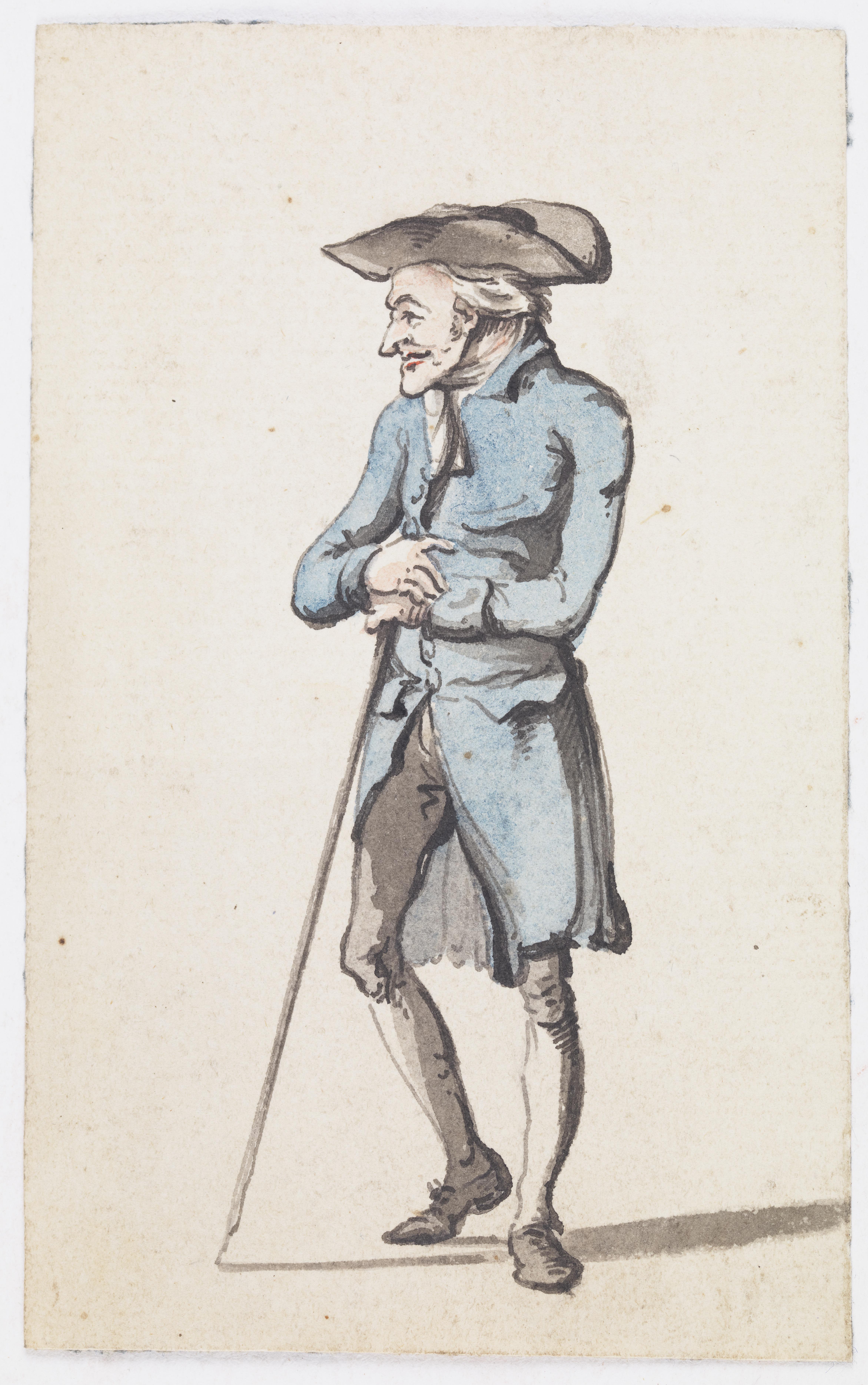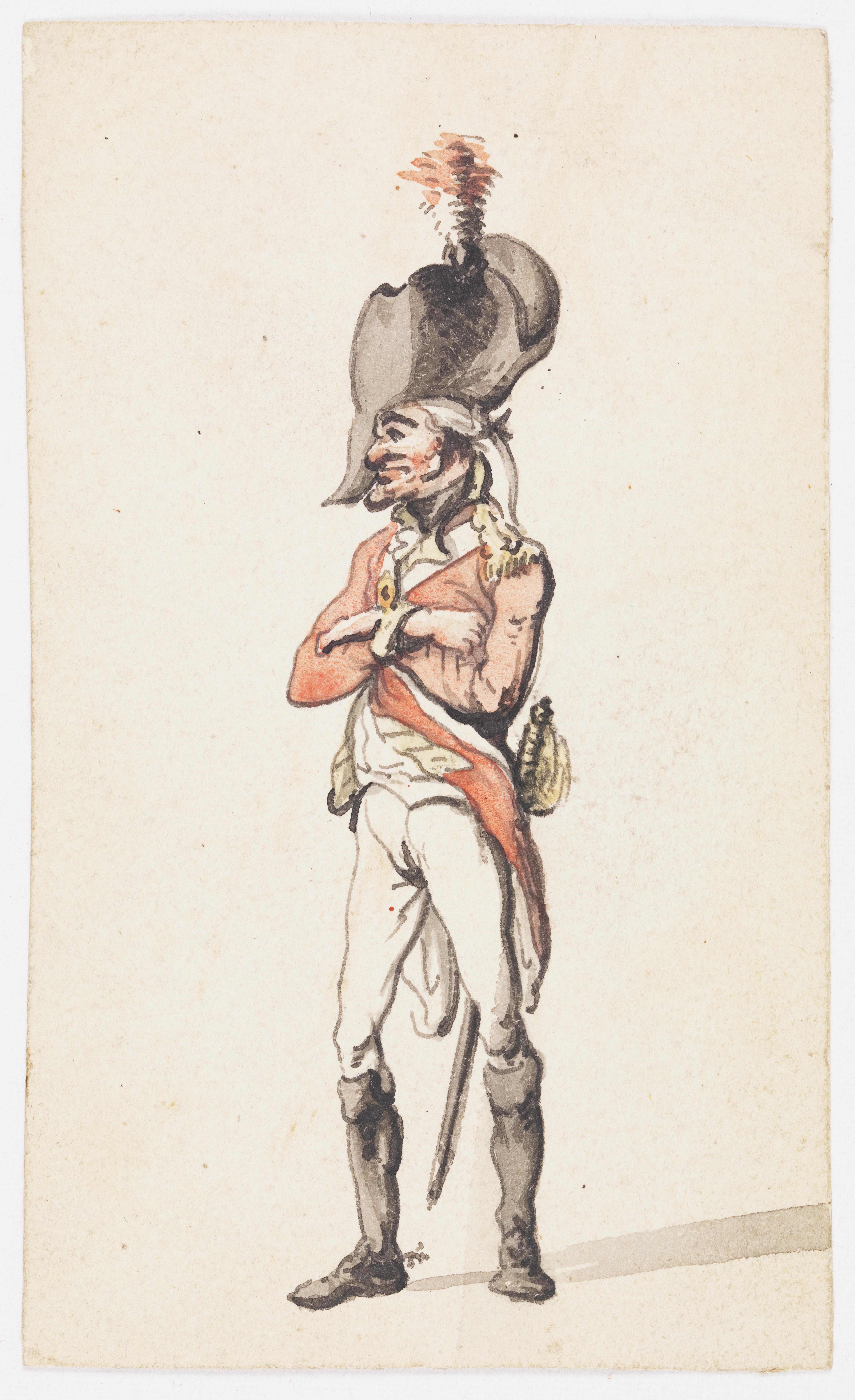Clothing the Convicts
Students analyse the clothing convicts wore on the journey to NSW and consider clothing as communication.
This is the student activity 1 of 7 of the Convict clothing learning activity.
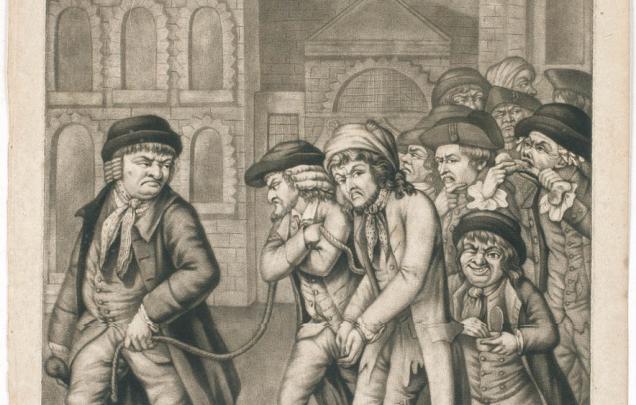
What They Wore
The clothing worn by First Fleet convicts is poorly recorded in history. There are few images that give us an accurate idea about what they might have been wearing. Some of the convicts had clothes they brought with them. In English prisons, if you had money of your own, then you would also have your own supplies of clothing. The clothes distributed by the government to the First Fleet convicts were everyday clothes and were referred to as ‘slops’. They were not special clothes in any way. The First Fleet convicts did not look any different to people in England.
Answer this question:
- Why do you think the clothes were called ‘slops’? [Answer in Additional Information.]
Look at the images below. The first image is from a painting created in 1830. The First Fleet convicts did NOT look like this! It was much later in our colonial history when convict clothing was printed with arrows. The arrows indicated that the clothing was government property. The other images of convicted criminals in London are a more accurate depiction of convict men’s clothing.
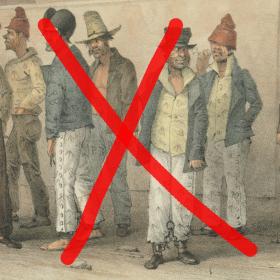
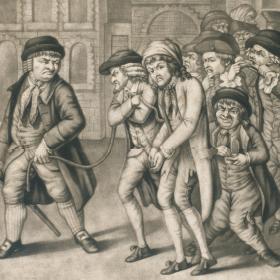
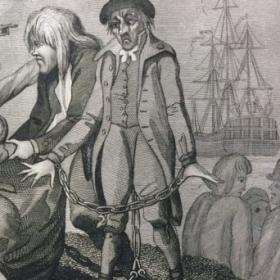
Clothes for the First Fleet convicts to wear in the colony were ordered in England before departure and placed on the ships. Arthur Phillip ordered more clothes for the convict women, as he’d been giving out the existing clothes supplies while they were waiting to sail. Many of the convict women didn’t have anything to wear when coming out of prison. Sadly the requested clothing didn’t arrive in time and got left behind.
Study the list of women’s clothing recorded in the log book as unloaded from the Lady Penrhyn in March 1788.
Convict women’s clothing:
- 589 petticoats (skirts, as outerwear - not as we use the word today)
- 606 jackets
- 121 caps (small hat)
- 327 pairs stockings, although 140 pairs were damaged. (These are like very long socks.)
- 381 shifts (light cotton undergarment shaped like a dress worn under your skirt, also used for sleeping)
- 250 handkerchiefs (large square cotton/linen cloth used like a scarf)
- 305 pairs shoes
- 140 hats
[Note: No complete list of supplies brought out by the First Fleet exists.]
To find out what convict men wore in 1788 is challenging. Here is a list compiled from a few primary sources.
Convict men’s clothing:
- jacket
- shirt
- waistcoat
- breeches (trousers down to your knees)
- woollen drawers (underpants down to your knees)
- worsted stockings (these are like long socks to above the knee)
- hat
- shoes
Define the words worsted and woollen.
The fabrics used were quite different to the many man-made fabrics we use today. Fabrics used for clothing for working class English people included wool, cotton, linsey (linen/cotton), linen, serge and canvas. These were all natural fabrics that were made by weaving – the woven fabrics could be quite stiff and hard, and a bit itchy too. Soft jersey fabric, like T-shirt fabric today, was not yet made. The first synthetic (man-made) fabrics could only be purchased from the 1930s, and it wasn’t until even later that stretchy clothes were available!
Answer these questions:
- What are the advantages and disadvantages of wearing natural fabrics?
- Make a venn diagram to show which clothing items were for summer wear, winter wear and which could be worn in both seasons.
- Research average daily temperatures for winter and summer in England and compare to Australia. How suitable was this clothing for Australian conditions?
- No foot measurements were taken before the purchase of the shoes. What would a convict do if none of the shoes fitted their feet?
Look at the image of hats for convict men below. This is an extract from a larger image, from 1781, of convicted criminals. It shows a variety of hats worn by men in England. The man second from left is wearing a cap. It most resembles a plain loose beanie today. Notice that everyone is wearing a hat.
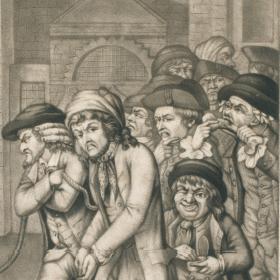
Answer these questions:
- Why did everyone have to wear a hat? [Answer in Additional Information.]
- Did hats have any other purpose? [Answer in Additional Information.]
People in the colony even made their own hats from the leaves of the cabbage-tree palm (Livistona australis).
Read Surgeon George Worgan’s description of the cabbage tree leaves:
Large Fan-like leaves spring out.
Look at these images of cabbage-tree palm leaves and a similar style hat to the “cabbage hat”.
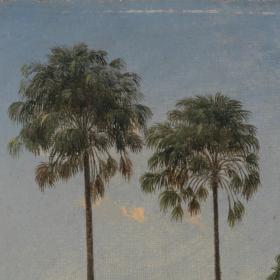
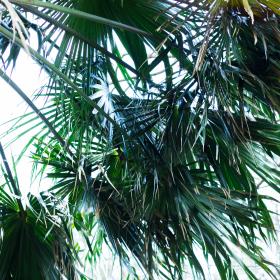
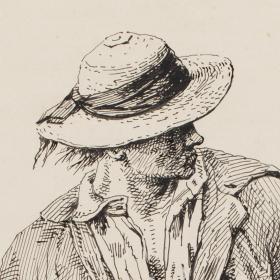
The fibre from the fronds was woven together to make a light-weight hat that had a flat wide brim to protect their faces from the harsh Australian sun. There are records of convicts stealing each other’s “cabbage hats” in Rose Hill in 1790. The dried fronds of the hat made it the colour of straw. These hats are amongst the first products made completely from Australian materials by the colonists. Cabbage tree hats were a very popular and practical hat and were still being made in the early 20th century.
Aboriginal people used parts of this tree for food, medicine and shelter. The fibres were used to make string, rope and fishing line. The colonists also built their ‘wattle and daub’ huts from the wood of the cabbage tree palm.
What Your Clothing Said About You
Clothing was one way everyone could tell ‘who was who’ in the colony.
Look at the drawings below. They were created in England at the same time as the First Fleet. They are not drawings of convicts or colonists in Sydney, but they do help us understand the differences in the clothing of the distinct groups of men in the colony in 1788. The drawn bodies are exaggerated (nobody had arms or legs like that!)
Match the clothing to the group of men.
- Government officials
- Military Officers
- Convicts
Play “Guess the Shadow”. In a darkened space, with a strong light against a blank wall, students use found items from the classroom (a pencil case? a book? etc) to create shadows on the wall to represent the Governor, Officials, Marines, or convicts. Alternatively, use a box of costumes or even make shadow puppets. Think about hat shapes, clothing shapes and things they might be holding. The Governor’s hat had a distinctive shape. Think about the angular shoulder shapes created by uniforms and convict women’s mob caps. Can your class guess who it is?
